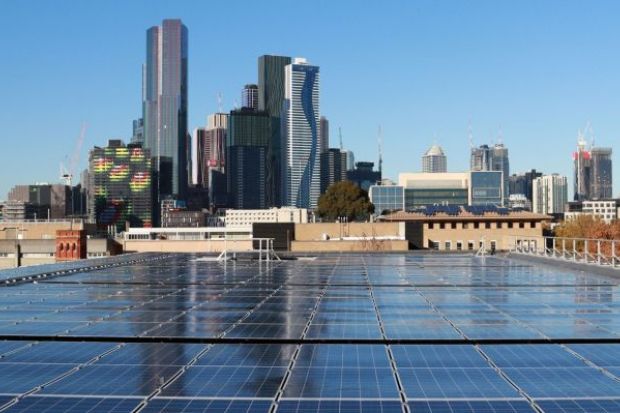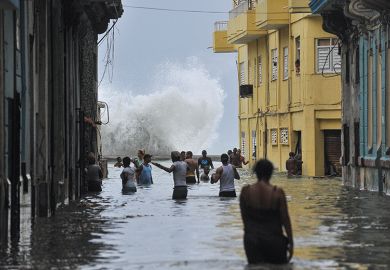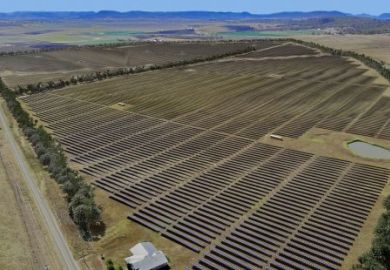Australia’s top-ranked university is accepting more responsibility for its environmental footprint as it zeros in on plans to eliminate its net carbon emissions.
The University of Melbourne says it has already achieved zero net emissions from electricity use after installing enough solar panels to power 650 houses, and saving enough electricity to power another 820 homes by upgrading its lighting, ventilation, heating and cooling systems.
Meanwhile it has acknowledged accountability for a vastly enlarged swathe of greenhouse gases by broadening its estimates to include “scope 3” emissions produced by facilities that it does not own or control, through largely off-site activities such as consultancies, business travel, staff commuting and advertising.
This has more than quadrupled the emissions in its inventory, from about 38,000 tonnes of carbon dioxide equivalence (tCO2-e) in 2021 to in excess of 165,000 in 2022.
The calculations are outlined in Melbourne’s 2022 Sustainability Report, which has just been released. Chief operating officer Paul Axup said that while the previous year’s report had included some scope 3 emissions, the range of activities included had been expanded after Melbourne conducted a “detailed review” of some A$1 billion (£540 million) of spending on capital works, services, products and travel.
“We want to be transparent on the emissions that we control or drive,” Mr Axup said. “It’s about…understanding our full impact to make sure we set the right targets and actions. We’re very committed to leading on sustainability. The university’s campuses act as testing grounds where we can pilot innovative solutions and provide an example that others may follow.”
On paper, the new approach reverses much of the progress the university has made on net emissions. After hovering at around 200,000 tCO2-e in the initial years of Melbourne’s sustainability reporting, they dived to 141,00 in 2020 – mainly because of reduced power use and travel, as Covid closed campuses and borders – and then to 37,500 in 2021, after the university bought carbon credits from hydropower, biomass generation and native forest regeneration projects in Australia, China, Indonesia and Thailand.
Progress continued in 2022, as Melbourne sourced almost two-thirds of its electricity through purchase agreements primarily with wind farms. Nevertheless, net emissions soared as the university factored in a ream of new activities including professional services, computing, office supplies and construction and repairs – including the embodied energy in the building materials.
The university piloted a method for estimating the “upfront carbon” of construction projects, using “life cycle analyses” undertaken for building projects on its main campus. But most scope 3 emissions were based on the amount of money spent.
Under this approach, professional services such as consultancies are responsible for more emissions than any other category of university activities, including on-campus electricity consumption.
The same applies at UNSW Sydney, where “purchased goods and services” are responsible for some 89,000 tCO2-e, according to the university’s 2021 sustainability report. Investments run a close second at 81,000.
Melbourne has also committed to including its investment portfolio in its scope 3 emissions reporting, as it strives to be carbon neutral by 2025 and “climate positive” by 2030.
The calculations are almost as challenging as the targets. Melbourne says that while the figures are estimates, it is working to refine them by basing them more closely on the activities rather than spending.
“As a very large institution, that’s a big piece of work,” Mr Axup said.
Register to continue
Why register?
- Registration is free and only takes a moment
- Once registered, you can read 3 articles a month
- Sign up for our newsletter
Subscribe
Or subscribe for unlimited access to:
- Unlimited access to news, views, insights & reviews
- Digital editions
- Digital access to THE’s university and college rankings analysis
Already registered or a current subscriber?










